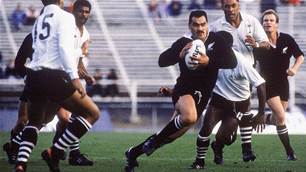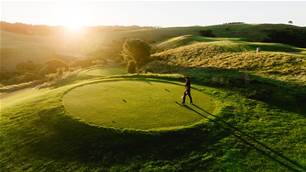If you are after a Sandbelt experience that will have you craving more because you’ve had a lot of fun from holes 1 to 18, Long Island is the course for you.
It is for this reason I rate Long Island one of my Sandbelt favourites. It’s not an arduous journey (6,189 metres from the back markers), it covers good golfing terrain and it calls on you to think about your shots, even short pitches from the middle of the fairway. The green complexes are also typically Sandbelt, with wide openings and plenty of bunkers cut into the edges of the putting surfaces, .
The sandy undulating land, where the course now lies, began last century as the Frankston Racecourse. What a racecourse it must have been as the topography here is far from being flat and conducive to the sport of kings.
Nearly 10 years after the last race was held, a developer had a plan to build a golf course next to the already established Peninsula club. But due to the Great Depression, the plans were put on hold until 1933 when an approach was made to course designer Alex Russell – who worked with Dr Alister MacKenzie on Royal Melbourne’s West course and created the same club’s East course – to assess the property.
Although his report was favourable, Russell, who had reservations about the financial viability of the project, said he could not spare the time to design the layout. So the job went to Gordon Oliver, an expat Brit who, at that time, had an empty golf course design portfolio.
It is testament to his ability that much of his creation – with the exception of three holes – went unchanged for decades. The trio of holes that did change – the 7th, 8th and 9th holes – were rebuilt by the prolific designer Vern Morcom in 1946 and, in doing so, gave rise to one of the best par-3s in the Sandbelt.
Morcom replaced the par-5 9th because of the blind second shot the hole presented. This created a new par-4 8th – now known as ‘Hogsback’ – and the 130-metre par-3 9th, which is appropriately called ‘The Lookout’.
Hogsback, a gentle 310 metres, is a unique hole simply because the fairway is actually shaped like a hog’s back so tee shots down the middle are channelled to the left or right edge of the fairway. Good club selection is required to hold the green, which slopes away from front to back.
Related Articles

International Spotlight: Omanu Golf Club

Celebrity Kiwi couple tee off in paradise



.jpg&h=115&w=225&c=1&s=1)









